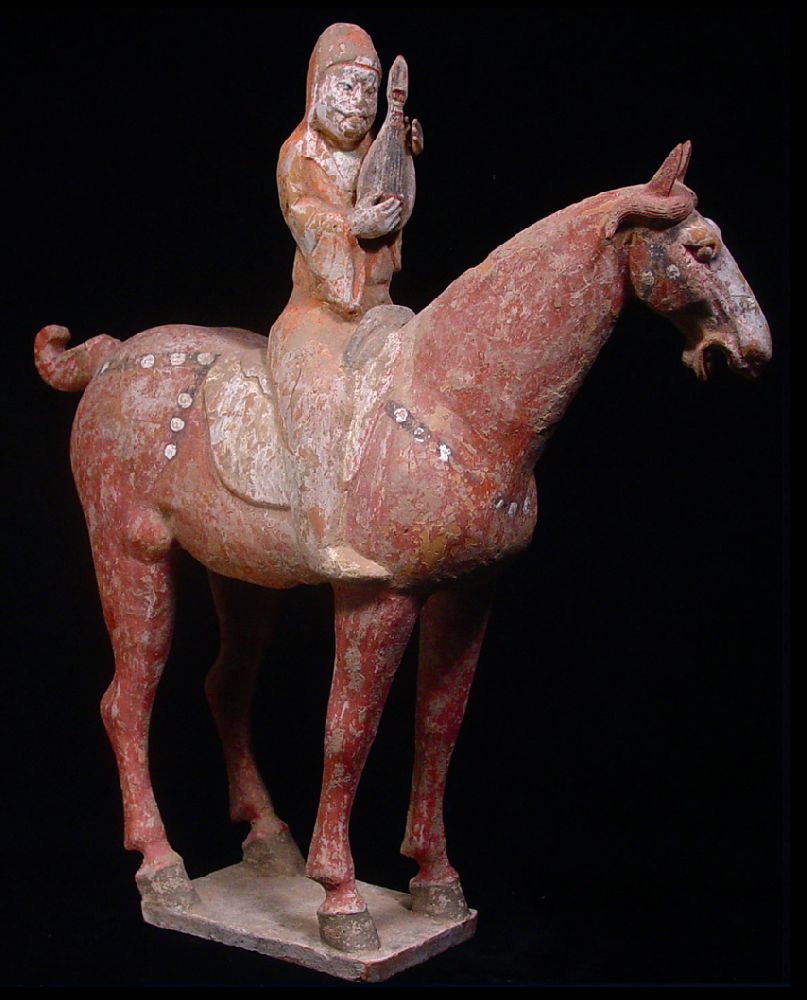

Title: Ancient China Tong Tang Dynasty Terra Cotta Musician On Horseback
Shipping: $29.00
Artist: N/A
Period: Antiquity
History: N/A
Origin: N/A
Condition: Museum Quality
Item Date: 618-907 AD
Item ID: 5984
TONG (TANG) DYNASTY BEARDED FOREIGN MUSICIAN ON HORSEBACK. China, 618-907 AD. 17.5 x 18.5 inches with original color and in excellent condition. The pi pa (Chinese lyre) separate as made but also original and intact. *All of the art is edited and chosen by us for its high quality and workmanship before posting. We are committed to enhancing our customer’s lives by discovering creating, and pointing out only the best art we can find in the world today. We Are Taste-Makers, Art Advisers, Consultants & Publishers Of Spectacular Art Stories. Our job is to be intermediaries between buyers and sellers. We are vetting for high end art patrons. We are determined to catalog the world's most exceptional art and share it with everyone.
Link: http://en.wikipedia.org/wiki/Chinese_art
Chinese art is visual art that, whether ancient or modern, originated in or is practiced in China or by Chinese artists. The Chinese art in the Republic of China (Taiwan) and that of overseas Chinese can also be considered part of Chinese art where it is based in or draws on Chinese heritage and Chinese culture. Early "stone age art" dates back to 10,000 BC, mostly consisting of simple pottery and sculptures. After this early period Chinese art, like Chinese history, is typically classified by the succession of ruling dynasties of Chinese emperors, most of which lasted several hundred years.
Chinese art has arguably the oldest continuous tradition in the world, and is marked by an unusual degree of continuity within, and consciousness of, that tradition, lacking an equivalent to the Western collapse and gradual recovery of classical styles. The media that have usually been classified in the West since the Renaissance as the decorative arts are extremely important in Chinese art, and much of the finest work was produced in large workshops or factories by essentially unknown artists, especially in the field of Chinese porcelain. Much of the best work in ceramics, textiles and other techniques was produced over a long period by the various Imperial factories or workshops, which as well as being used by the court was distributed internally and abroad on a huge scale to demonstrate the wealth and power of the Emperors. In contrast, the tradition of ink wash painting, practiced mainly by scholar-officials and court painters especially of landscapes, flowers, and birds, developed aesthetic values depending on the individual imagination of and objective observation by the artist that are similar to those of the West, but long pre-dated their development there.